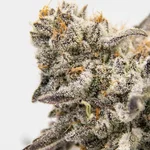Understanding Medical Marijuana in Ohio
Medical marijuana has been a hot topic for discussion in Ohio ever since it was legalized in 2016. Despite the legalization, Ohio has one of the strictest medical marijuana programs in the country. The Ohio Medical Marijuana Control Program (OMMCP) oversees the cultivation, processing, and dispensing of medical marijuana. The program provides patients with medical conditions the opportunity to seek alternative treatments to traditional pharmaceuticals. However, it is important to note that medical marijuana is not a cure-all for every ailment. It is essential to understand how it works, how to use it safely, and the potential benefits and risks before seeking treatment.
The Benefits of Medical Marijuana
One of the most significant benefits of medical marijuana is the relief it can provide to patients with chronic pain. Studies have shown that marijuana’s active components, including THC and CBD, can help reduce inflammation and pain. Medical marijuana can also be used as an alternative treatment for cancer patients undergoing chemotherapy, as it can help alleviate nausea and vomiting. Additionally, medical marijuana has been shown to help manage symptoms of various mental health conditions, such as anxiety, depression, and PTSD.
The Risks of Medical Marijuana
While medical marijuana can offer numerous benefits to patients, it is not without its risks. Patients who use medical marijuana may experience side effects such as dry mouth, increased heart rate, and dizziness. Additionally, marijuana use can impair cognitive and motor function, which can be dangerous when operating heavy machinery or driving. It is also important to note that medical marijuana is not recommended for pregnant women, as it may pose a risk to the developing fetus.
Understanding Weed Strains
When it comes to medical marijuana, not all strains are created equal. Different strains of marijuana contain different levels of THC and CBD, which can affect the way patients respond to treatment. Understanding the different strains of marijuana can help patients find the most suitable treatment for their needs.
Sativa Strains
Sativa strains of marijuana are known for their uplifting and energizing effects. This strain is ideal for patients looking for relief from anxiety and depression, as it can help improve mood and increase energy levels. Sativa strains can also help improve focus and creativity, making it an excellent choice for patients suffering from attention deficit hyperactivity disorder (ADHD).
Indica Strains
Indica strains of marijuana are known for their calming and relaxing effects. This strain is ideal for patients looking for relief from chronic pain and insomnia, as it can help reduce inflammation and promote relaxation. Indica strains are also commonly used to alleviate symptoms of anxiety and depression, as it can help patients feel more at ease and reduce stress levels.
Hybrid Strains
Hybrid strains of marijuana are a combination of sativa and indica strains. These strains offer a balance of both effects, making them a popular choice for patients seeking relief from multiple symptoms. Hybrid strains can help improve mood, reduce pain, and promote relaxation, making them a versatile treatment option.
Understanding Edibles
Edibles are a popular way to consume medical marijuana, as they offer a discreet and convenient way to receive treatment. Edibles can be found in various forms, including gummies, chocolates, and baked goods, and can be infused with different strains of marijuana to provide different effects.
How Edibles Work
When consumed, edibles pass through the digestive system before entering the bloodstream. This means that the effects of edibles take longer to onset and may last longer than other methods of consumption, such as smoking or vaping. It is essential to start with a low dose of edibles, as they can be potent and take longer to take effect than other methods of consumption.
The Benefits of Edibles
Edibles offer patients a discreet and convenient way to receive treatment. They can be consumed without drawing attention or producing a strong odor, making them ideal for patients who may need to consume medical marijuana in public. Additionally, edibles can provide longer-lasting effects than other methods of consumption, making them an ideal choice for patients seeking long-term relief.
The Risks of Edibles
While edibles offer numerous benefits, they are not without their risks. Edibles can be potent and take longer to take effect than other methods of consumption, making it essential to start with a low dose. Additionally, the effects of edibles can vary depending on the individual, making it important to monitor the effects carefully. Overconsumption of edibles can lead to unpleasant side effects such as nausea and dizziness.
Understanding CBD
CBD is a non-psychoactive component of marijuana that has gained popularity in recent years for its potential health benefits. CBD can be found in various forms, including oils, tinctures, and edibles, and can provide numerous benefits to patients seeking alternative treatments.
The Benefits of CBD
CBD has been shown to provide numerous health benefits, including reducing inflammation, relieving pain, and managing symptoms of anxiety and depression. Additionally, CBD has been shown to have neuroprotective properties, meaning it may offer protection to the brain and nervous system.
The Risks of CBD
While CBD is generally considered safe, it is not without its risks. CBD can interact with certain medications, so it is important to consult with a healthcare provider before starting treatment. Additionally, CBD can cause side effects such as dry mouth, dizziness, and changes in appetite.
Conclusion
In conclusion, medical marijuana can offer numerous benefits to patients seeking alternative treatments. However, it is important to understand how it works, how to use it safely, and the potential benefits and risks before seeking treatment. Patients should consult with a healthcare provider before starting treatment and monitor the effects carefully. Additionally, understanding the different strains of marijuana, methods of consumption, and potential benefits and risks of CBD can help patients find the most suitable treatment for their needs.












